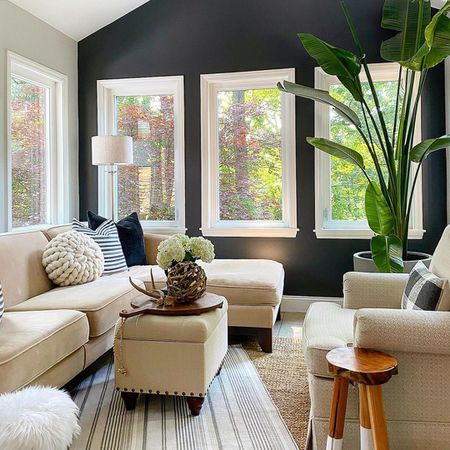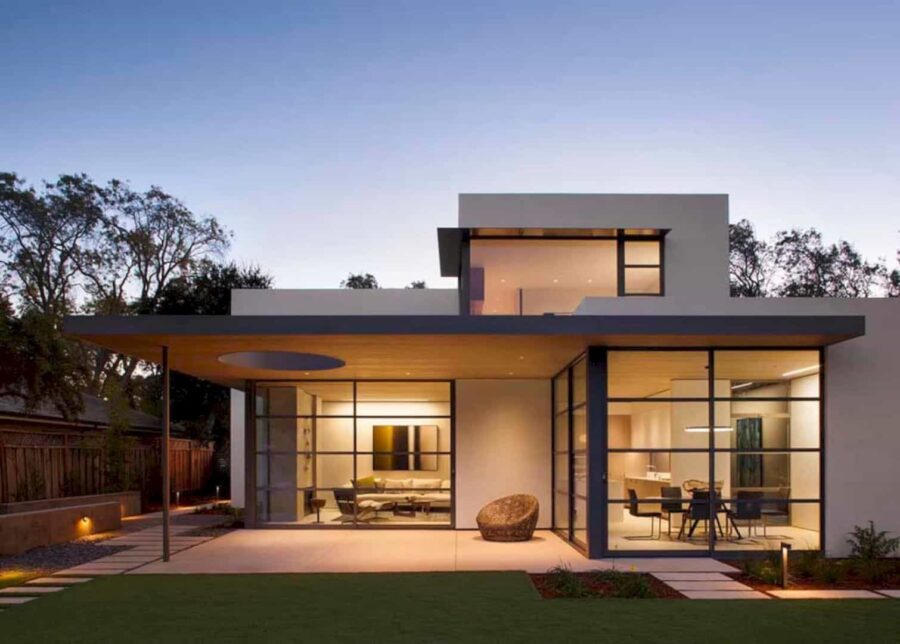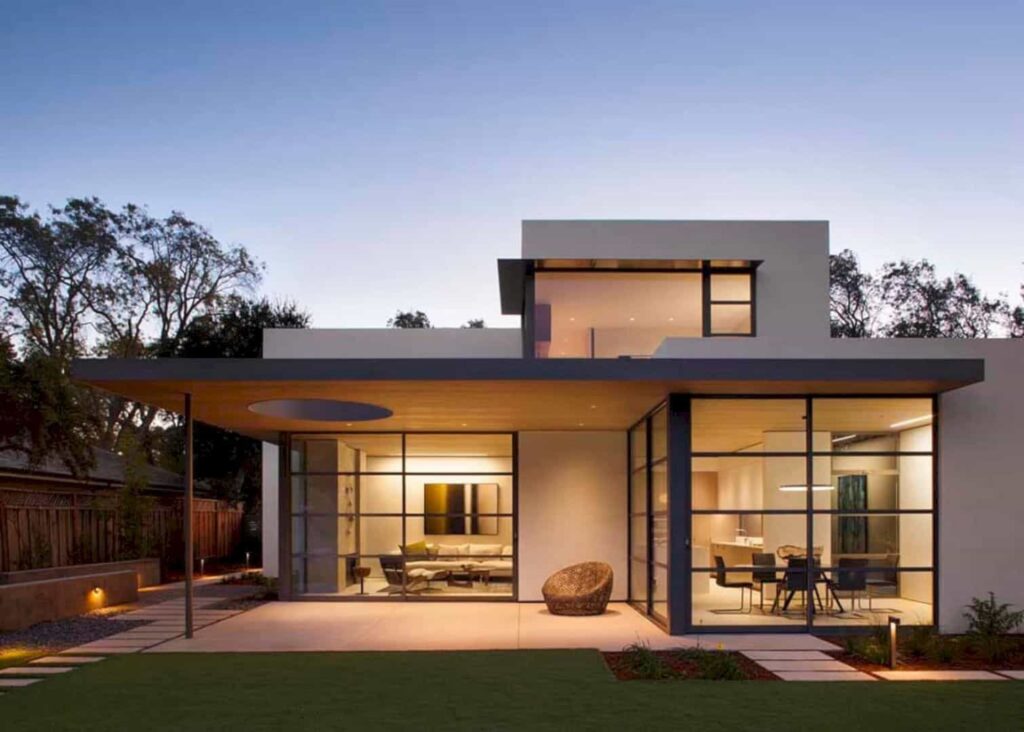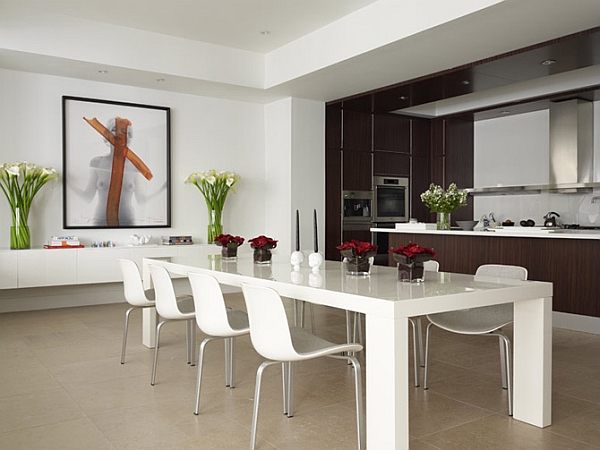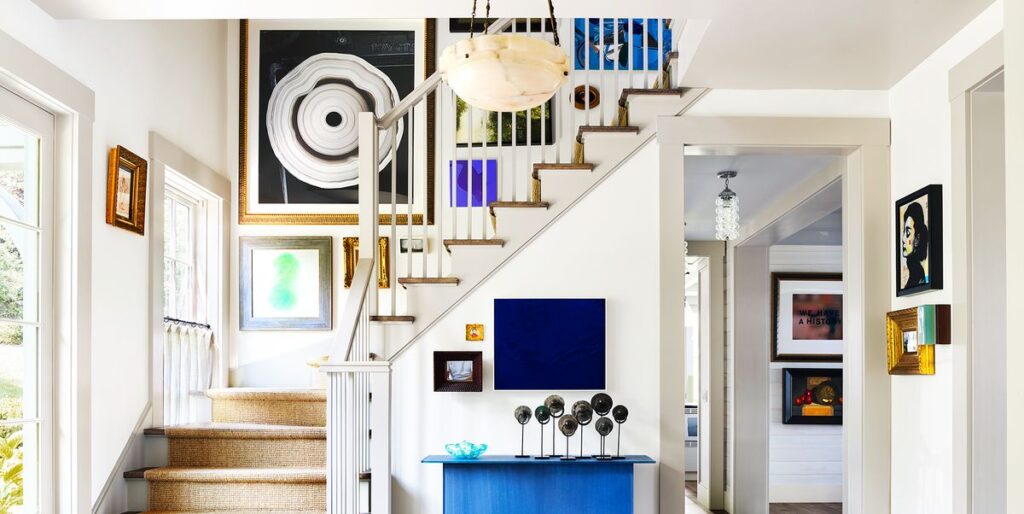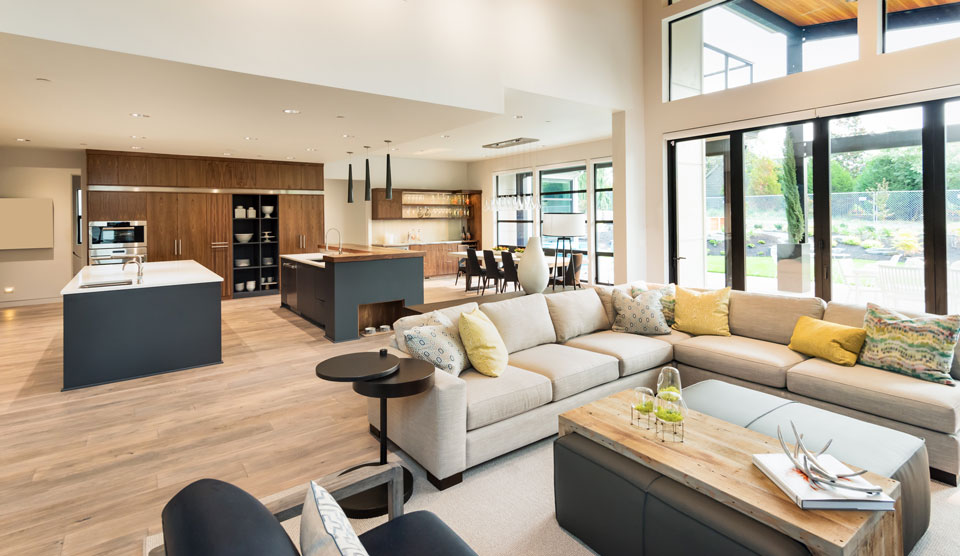The quality of air these days has become a growing concern worldwide. Rapid industrialization, urbanization, and increased human activities have significantly declined air quality, particularly in densely populated areas. Burning fossil fuels, vehicle emissions, industrial processes, and agricultural practices release a range of pollutants into the atmosphere. These pollutants include particulate matter, nitrogen oxides, sulfur dioxide, volatile organic compounds, and greenhouse gases. Prolonged exposure to poor air quality can harm human health, leading to respiratory problems, cardiovascular diseases, allergies, and other related illnesses.
Modern Contemporary Dining Room Ideas: Light Wood Flooring, Lights, Live Plants
Furthermore, air pollution impacts human health, harms ecosystems, degrades agricultural productivity and contributes to climate change. Individuals, communities, and governments must prioritize and implement measures to improve air quality through sustainable practices, stricter emission standards, renewable energy sources, and the promotion of green technologies. By addressing the challenges associated with air pollution, we can safeguard the health and well-being of current and future generations and protect the environment we all depend on.
Indoor plants enhance air quality within our homes and living spaces. As we spend a significant amount of time indoors, creating an environment that supports our health and well-being becomes essential. Indoor air pollution is prevalent, with various pollutants in our homes, including volatile organic compounds (VOCs) emitted by household products and furnishings. By incorporating air-filtering plants, we can naturally and effectively reduce the concentration of these pollutants. Plants act as living air purifiers, absorbing harmful gases and releasing oxygen, creating a healthier and fresher atmosphere. Additionally, indoor plants help regulate humidity levels, offer psychological benefits, add visual appeal to our spaces, and establish a connection with nature. By recognizing the importance of indoor plants for air quality, we can take a proactive step towards creating a cleaner, more rejuvenating indoor environment.
Top 24 Living Room Layout Mistakes to Avoid for a Functional and Stylish Space
Indoor Oasis: The Benefits of Incorporating Plants for Air Quality
Keeping plants inside the house for air quality has several benefits. Here are some reasons why incorporating indoor plants can improve the air quality of your home:
- Natural Air Purification: Plants can absorb airborne pollutants with tiny openings in their leaves called stomata. They can effectively filter out harmful gases such as formaldehyde, benzene, xylene, and ammonia, commonly found in household products, paints, and furnishings. By having air-filtering plants indoors, you can reduce the concentration of these pollutants in the air, promoting cleaner and healthier indoor air quality.
- Oxygen Production: Through photosynthesis, plants convert carbon dioxide into oxygen, increasing oxygen levels in the surrounding environment. This can be particularly beneficial in enclosed spaces with limited ventilation, such as bedrooms or offices, where fresh air circulation may be restricted.
- Humidity Regulation: Many indoor plants release moisture vapor into the air through transpiration. This can help regulate humidity levels and create a more comfortable living environment. Adequate humidity levels are essential for respiratory health and prevent issues like dry skin, irritated eyes, and respiratory congestion.
- Psychological Benefits: Besides their air-purifying properties, plants offer psychological benefits by creating a soothing atmosphere. Studies have shown that being around plants indoors helps to reduce stress, improve mood, and enhance overall well-being. The presence of greenery and natural elements indoors helps improve mental health and contribute to a more peaceful and relaxing environment.
- Aesthetics and Ambiance: Indoor plants add a touch of beauty, color, and life to any living space. They can serve as decorative elements, enhancing the aesthetics and ambiance of a room. Different plant varieties and arrangements can also be a creative way to personalize your home decor.
- Connection with Nature: Bringing nature indoors allows us to connect more closely with the natural world. Having plants around can create a sense of tranquility and provide a visual reminder of the beauty and diversity of the natural environment.
Remember that while plants can contribute to improved air quality, they should not be considered a complete substitute for proper ventilation and other measures to address specific air quality concerns. Regular maintenance, appropriate watering, and providing adequate light conditions are essential to ensure the health and effectiveness of indoor plants as air filters.
Laundry Room Design: Ideas and Essentials for a Functional and Stylish Space
Breathing Fresh: Harnessing the Power of Air-Filtering Plants
Welcome to our interactive blog on plants that can be used as air filters! Indoor air pollution is an increasing concern, and incorporating air-filtering plants into our living spaces can be a natural and aesthetically pleasing way to improve air quality. Throughout this blog, we’ll explore various plants known for their air-purifying properties and learn how they can benefit our health and well-being.
- Spider Plant (Chlorophytum comosum): The spider plant is ideal for indoor environments due to its ability to filter formaldehyde, xylene, and toluene. These chemicals are commonly found in household cleaning products and can harm our health when inhaled. Spider plants are simple to care for and thrive in various lighting conditions.
- Snake Plant (Sansevieria trifasciata): Also known as “mother-in-law’s tongue,” the snake plant is highly effective at filtering formaldehyde, benzene, trichloroethylene, and xylene. It releases oxygen at night, making it an excellent choice for bedrooms. Snake plants are low-maintenance, requiring minimal watering and tolerating various light levels.
- Aloe Vera (Aloe barbadensis): Beyond its well-known medicinal properties, aloe vera is a fantastic air-filtering plant. It effectively removes formaldehyde and benzene, which can be found in cleaning products and paints. Aloe vera plants thrive in bright, indirect sunlight and should be watered sparingly.
- Peace Lily (Spathiphyllum): The peace lily is an elegant plant that enhances indoor decor and helps purify the air by eliminating common pollutants like formaldehyde, benzene, trichloroethylene, and ammonia. It prefers shaded areas and regular watering.
- English Ivy (Hedera helix): English ivy is a versatile plant that can be grown indoors or outdoors. It filters formaldehyde, benzene, and trichloroethylene. English ivy requires moderate sunlight and regular watering to thrive.
- Bamboo Palm (Chamaedorea seifrizii): The bamboo palm is known for its power to filter formaldehyde, benzene, trichloroethylene, and xylene. It prefers bright, indirect light and regular watering. This plant adds a tropical touch to any space.
- Rubber Plant (Ficus elastica): Rubber plants are effective at removing formaldehyde from the air. They prosper in bright, indirect light and require regular watering. Their large, glossy leaves make them an attractive addition to any room.
Remember, while these plants can help improve indoor air quality, they shouldn’t be considered a standalone solution for highly polluted environments or specific health conditions. Nonetheless, incorporating these air-filtering plants into your living spaces can be a step toward creating a healthier and more aesthetically pleasing environment.
